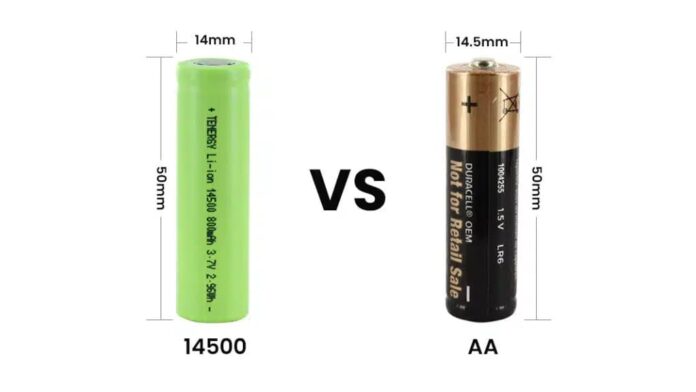Introduction:
In the world of batteries, where power reigns supreme, two contenders vie for the spotlight – the ubiquitous AA battery and its lesser-known but potent counterpart, the 14500 battery. As technology advances and power demands increase, the question arises: Can one seamlessly replace the other? In this exploration of the 14500 vs AA batteries, we unravel the intricacies and possibilities of this electrifying power play.
Understanding the Basics:
AA batteries have long been the stalwarts of portable electronics, from TV remotes to digital cameras. Their standard cylindrical shape and 1.5-volt power output make them versatile and widely compatible. On the other hand, the 14500 battery, despite its similar appearance, is a rechargeable lithium-ion cell known for its higher voltage, typically around 3.7 volts. This heightened voltage opens up new realms of possibilities but also raises concerns about compatibility.
Voltage Matters:
The first and most crucial consideration when contemplating the interchangeability of 14500 and AA batteries is voltage. The standard AA battery outputs 1.5 volts, while the 14500 boasts a substantially higher 3.7 volts. This voltage disparity can have significant implications for devices not designed to handle the elevated power output of 14500 batteries.
Most gadgets calibrated for AA batteries may not withstand the increased voltage, risking damage or malfunction. However, some devices explicitly designed for lithium-ion batteries may benefit from the power boost provided by 14500 cells. It’s crucial to consult device specifications and manufacturer recommendations before attempting a swap.
Capacity and Endurance:
Beyond voltage, battery capacity is a pivotal factor in determining their suitability for specific applications. AA batteries, both disposable and rechargeable, are known for their relatively high capacity, providing extended usage before requiring replacement or recharge. In contrast, 14500 batteries, being lithium-ion, exhibit excellent energy density, offering a comparable or even superior capacity despite their smaller size.
The enhanced capacity of 14500 batteries makes them an appealing choice for power-hungry devices like high-performance flashlights and digital cameras. However, it’s essential to note that not all devices can harness the full potential of 14500 batteries, and their usage may be limited to gadgets explicitly designed for lithium-ion cells.
The Rechargeable Advantage:
One of the primary appeals of the 14500 battery lies in its rechargeable nature. While traditional AA batteries are available in both disposable and rechargeable variants, the 14500 offers a more sustainable and cost-effective solution for those committed to reducing their environmental footprint. This rechargeability factor adds another layer to the decision-making process when contemplating the switch from AA to 14500 batteries.
Conclusion:
In the realm of 14500 vs AA batteries, the decision to switch hinges on various factors, from voltage compatibility to capacity and rechargeability. While the 14500 battery brings heightened voltage and rechargeable convenience to the table, it’s crucial to assess whether your devices can accommodate the power surge. Ultimately, as technology evolves, so too does our quest for more efficient and sustainable power solutions. The 14500 battery, with its unique attributes, presents an intriguing alternative to the tried-and-true AA battery, offering a glimpse into the future of portable power. As we navigate this power play, the key is to stay informed, consult device specifications diligently, and embrace the evolving landscape of battery technology.





